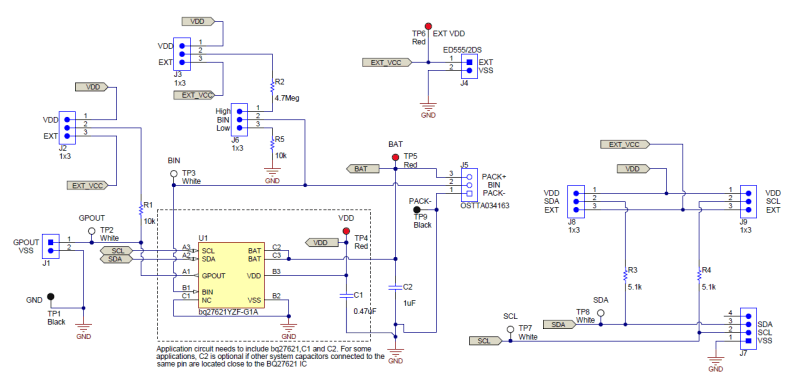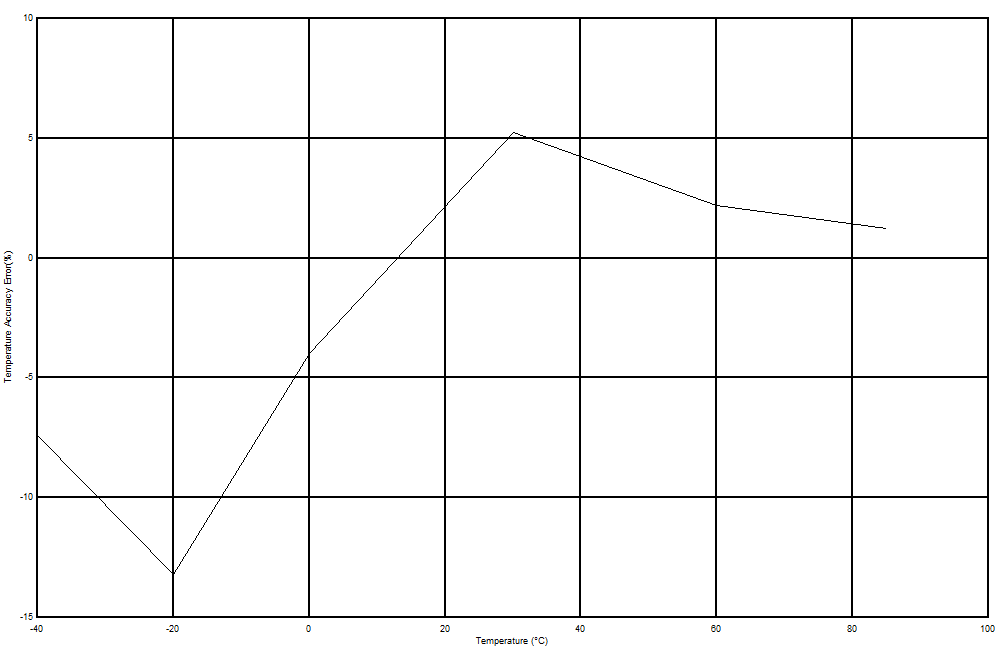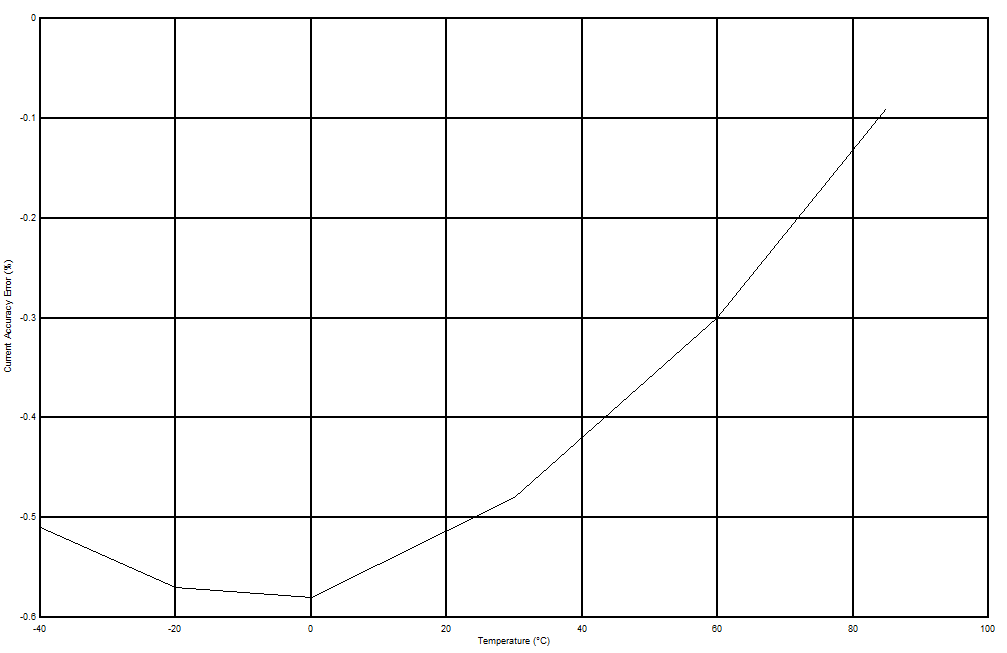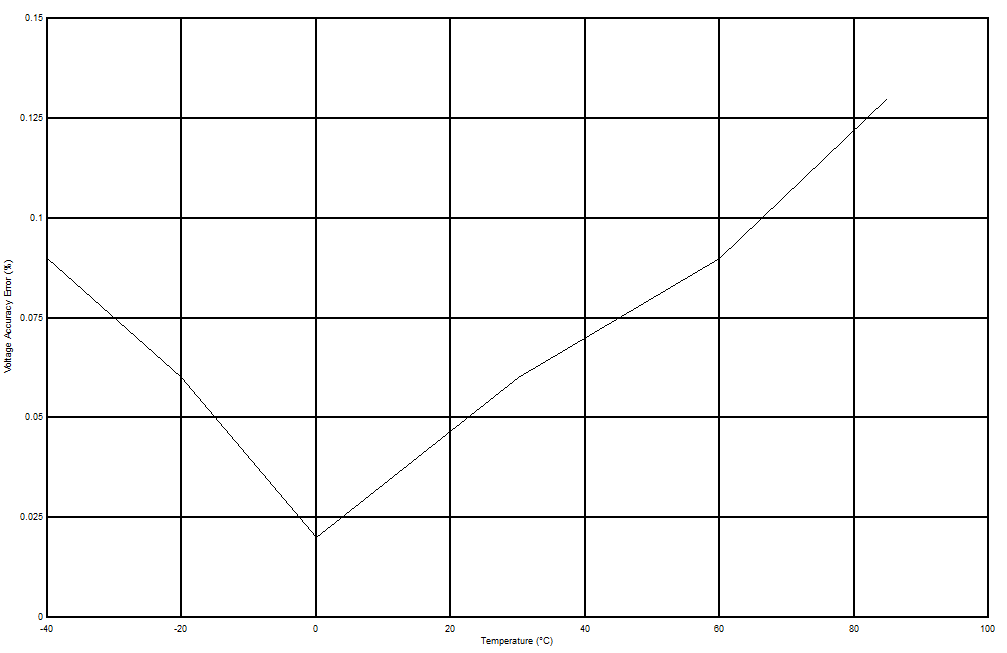SLUSBB3E December 2013 – January 2016
PRODUCTION DATA.
- 1 Features
- 2 Applications
- 3 Description
- 4 Revision History
- 5 Device Comparison Table
- 6 Pin Configurations and Functions
-
7 Specifications
- 7.1 Absolute Maximum Ratings
- 7.2 ESD Ratings
- 7.3 Recommended Operating Conditions
- 7.4 Thermal Information
- 7.5 Supply Current
- 7.6 Digital Input and Output DC Characteristics
- 7.7 LDO Regulator, Wake-up, and Auto-Shutdown DC Characteristics
- 7.8 ADC (Temperature and Cell Measurement) Characteristics
- 7.9 I2C-Compatible Interface Communication Timing Characteristics
- 7.10 Typical Characteristics
- 8 Detailed Description
- 9 Application and Implementation
- 10Power Supply Recommendations
- 11Layout
- 12Device and Documentation Support
- 13Mechanical, Packaging, and Orderable Information
Package Options
Refer to the PDF data sheet for device specific package drawings
Mechanical Data (Package|Pins)
- YZF|9
Thermal pad, mechanical data (Package|Pins)
Orderable Information
9 Application and Implementation
NOTE
Information in the following applications sections is not part of the TI component specification, and TI does not warrant its accuracy or completeness. TI’s customers are responsible for determining suitability of components for their purposes. Customers should validate and test their design implementation to confirm system functionality.
9.1 Application Information
The Texas Instruments bq27621-G1 fuel gauge accurately predicts the battery capacity and other operational characteristics of a single Li-base rechargeable cell.
9.2 Typical Application
 Figure 9. Reference (EVM) Schematic
Figure 9. Reference (EVM) Schematic
9.2.1 Design Requirements
The bq27621-G1 fuel gauge is predefined for LiCoO2-based batteries, which have 4.2-V, 4.3-V, and 4.35-V maximum charging voltages. One orderable part number contains three different battery profiles, which can be selected using I2C commands. Please refer to the bq27621-G1 Technical Reference Manual (SLUUAD4) for the procedure to select alternate chemistry profiles.
9.2.2 Detailed Design Procedure
9.2.2.1 BAT Voltage Sense Input
A ceramic capacitor at the input to the BAT pin is used to bypass AC voltage ripple to ground, greatly reducing its influence on battery voltage measurements. It proves most effective in applications with load profiles that exhibit high-frequency current pulses (that is, cell phones) but is recommended for use in all applications to reduce noise on this sensitive high-impedance measurement node.
9.2.2.2 Integrated LDO Capacitor
The fuel gauge has an integrated LDO with an output on the VDD pin of approximately 1.8 V. A capacitor of value at least 0.47 μF should be connected between the VDD pin and VSS. The capacitor should be placed close to the gauge IC and have short traces to both the VDD pin and VSS.
9.2.3 Application Curves
 Figure 10. Voltage Accuracy
Figure 10. Voltage Accuracy
 Figure 12. Current Accuracy
Figure 12. Current Accuracy
 Figure 11. Temperature Accuracy
Figure 11. Temperature Accuracy